Considerations when buying a heat pump hot water system in Adelaide
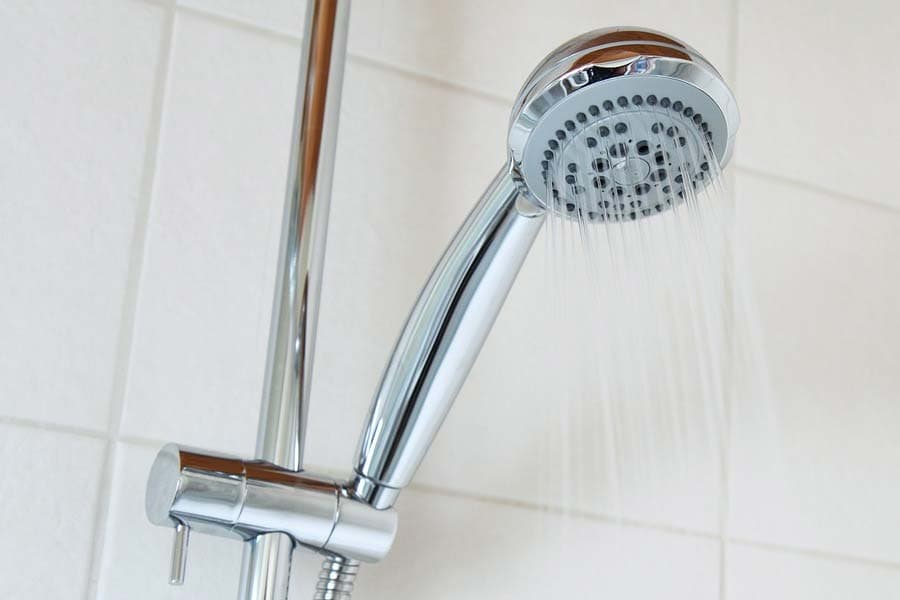
With over 40 years of experience in servicing and upgrading hot water systems in Adelaide, we have great knowledge of heat pump systems.
Our technicians are over 30 years old and have extensive knowledge across all heat pump systems to provide the best service.
We will have an Affordable solution for you
Stainless steel tank versus Vitreous enamel tanks
Benefits of Buying a Stainless-Steel Hot Water Tank
Replacing your hot water system can be a hassle and a costly endeavor. It is important to choose a hot water storage tank that will not only last a long time but also provide energy and cost efficiencies. There are two main types of hot water storage tanks: stainless steel and vitreous enamel. In this article, we will explore the benefits of buying a stainless-steel hot water tank.
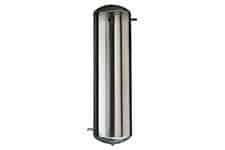
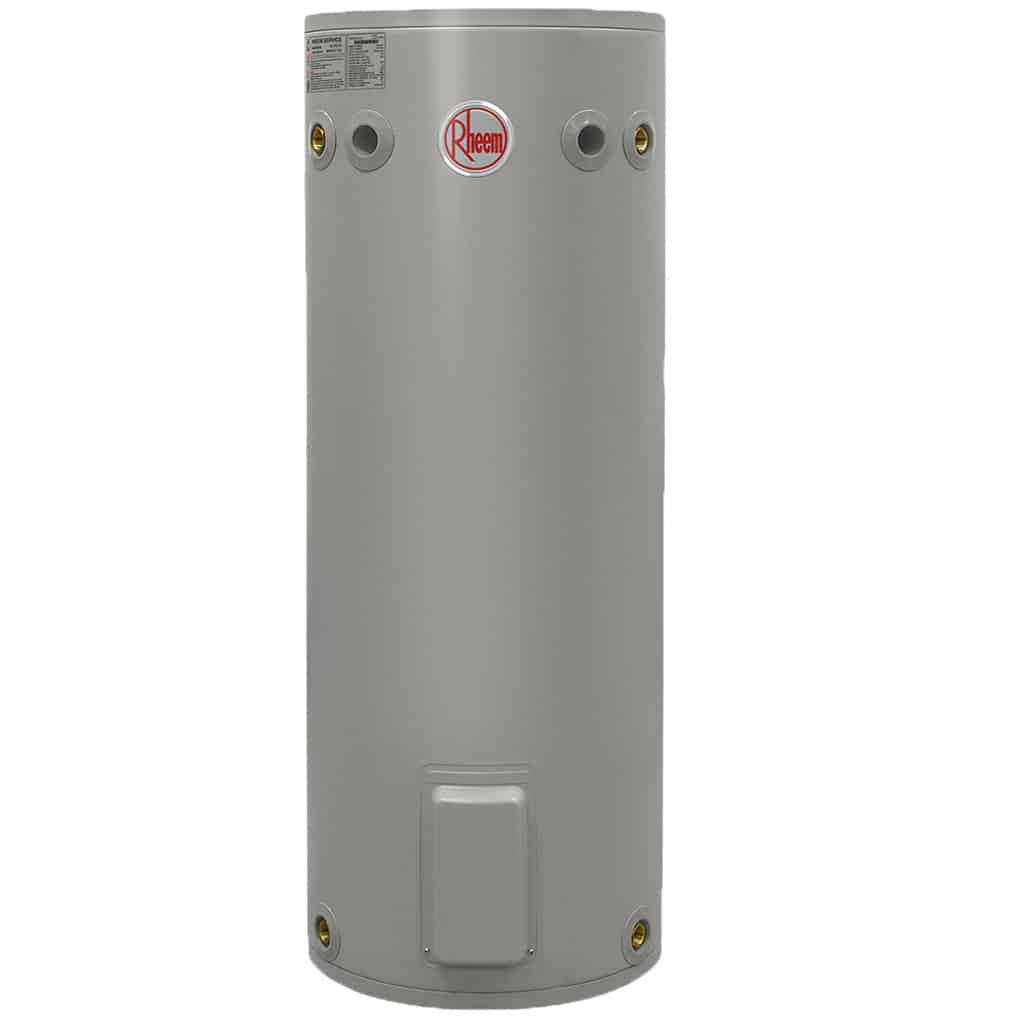
Stainless Steel Tanks
Stainless steel tanks are made from 316 stainless steel, a material commonly used in the marine industry due to its high corrosion resistance. The use of 316 stainless steel in various household items such as kitchen sinks, dishwashers, washing machines, and cutlery is a testament to its durability and reliability. The strength and inherent corrosion resistance of stainless steel make it an excellent choice for hot water tanks.
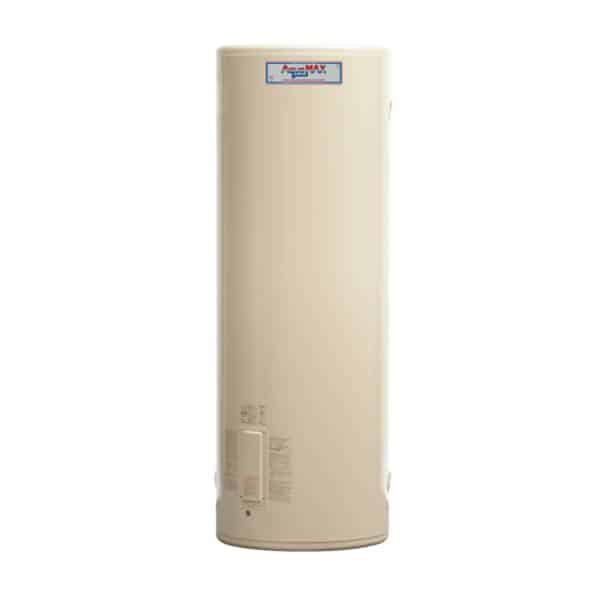
1. Corrosion Resistance:
Stainless steel provides a natural barrier to corrosion, making it virtually maintenance-free. This is particularly important for a hot water tank, as it will be constantly exposed to water and temperature fluctuations.
2. Longevity:
Stainless steel tanks are known for their longevity. They can withstand the constant stress of temperature and pressure variations, ensuring that they will last for many years without the need for regular maintenance or consumable parts.
3. Lightweight:
Stainless steel tanks are also lighter in weight compared to vitreous enamel tanks. This can make installation easier and reduce the overall weight load on your home’s structure.
4. Warranty:
Manufacturers of stainless-steel hot water tanks often provide longer warranties compared to vitreous enamel tanks. Some warranties can extend up to 15 years, giving you peace of mind and confidence in the longevity of the tank.
Vitreous Enamel Tanks
Vitreous enamel tanks, on the other hand, are made from carbon steel with a lining of vitreous enamel to protect the steel from corrosion. While this coating provides some level of protection, it is not entirely impervious, and the tank may require additional maintenance and care.
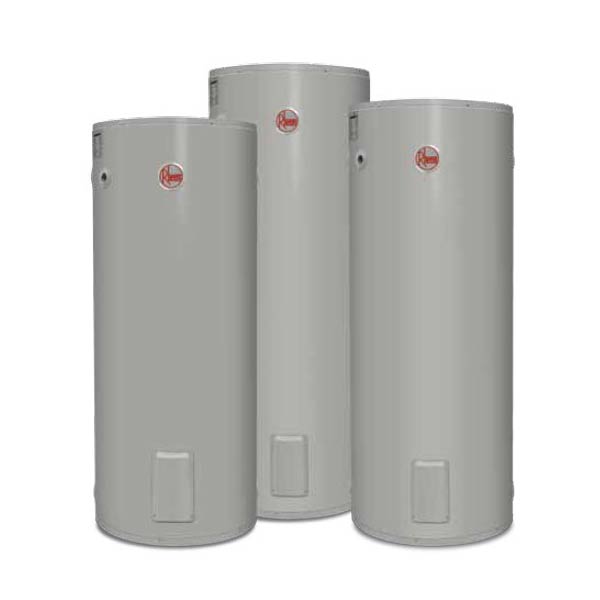
1. Anode Maintenance:
Vitreous enamel tanks require the use of sacrificial anodes to protect the exposed steel from corrosion.
These anodes, usually made from a magnesium alloy, need to be checked and replaced every 1-3 years on average.
Proof of Anode replacement is required by the manufacturer to be covered under warranty if the tank leaks
Some water qualities may render the anode ineffective, making this system unsuitable for certain areas.
Estimated cost to replace an Anode in Australia is around $300.
2. Shorter Warranty:
Vitreous enamel tanks typically come with shorter warranties compared to stainless steel tanks. The standard warranty for a vitreous enamel tank is usually around 5 years, while stainless steel tanks can have warranties of up to 15 years.
3. More Maintenance:
Due to the use of sacrificial anodes and the potential for enamel crazing or coming unstuck from the steel, vitreous enamel tanks may require more regular maintenance compared to stainless steel tanks.
4. Water Quality:
Vitreous enamel tanks can handle poor water quality, making them suitable for areas with problematic water conditions. In such cases, an aluminium anode can be fitted to extend the tank’s lifespan.
In summary, there are several benefits to buying a stainless-steel hot water tank. The corrosion resistance, longevity, and low maintenance of stainless-steel tanks make them a reliable and durable option. They also come with longer warranties compared to vitreous enamel tanks, giving you added peace of mind. While vitreous enamel tanks may be more affordable and suitable for areas with poor water quality, they require more maintenance and have shorter warranties.
When it comes to choosing the right hot water storage tank for your home, it is important to consider your specific needs and the conditions in your area. Consulting with a reputable manufacturer or hot water system supplier can help you make an informed decision and ensure that you choose a tank that meets your requirements.
Heat Pump Refrigerant Comparison
When it comes to heat pump technology, the choice of refrigerant is an important consideration. Refrigerants play a crucial role in the efficiency and environmental impact of heat pump systems. In this article, we will compare different refrigerants commonly used in heat pumps and highlight the benefits of Sanden Eco-Friendly heat pumps, which employ R744 (CO2) refrigerant.
The Environmental Impact of Refrigerants
One key factor to consider when choosing a heat pump refrigerant is its impact on the environment. Traditional refrigerants such as hydrofluorocarbons (HFCs) are known to contribute to ozone layer depletion and global warming. These substances have high global warming potential (GWP), meaning they have the potential to trap heat in the atmosphere and contribute to climate change.
In contrast, R744 (CO2) refrigerant offers no ozone layer depletion and minimal global warming. This makes it an excellent choice for environmentally conscious individuals. Should the system leak, the impact on the environment would be significantly less than with other commonly used refrigerants.
Energy Efficiency and Heat Transfer
In addition to its environmental benefits, R744 (CO2) refrigerant also offers superior energy efficiency and heat transfer properties. The Sanden Eco-Friendly heat pump, which utilises R744 (CO2) refrigerant, boasts higher compression efficiency and lower energy consumption. This means that more heat can be transferred to the water, using less energy. As a result, the heat pump unit can achieve a water temperature of 63ºC almost instantly.
Sanden Eco-Friendly Heat Pumps
Sanden is the only heat pump manufacturer in Australia that currently employs R744 (CO2) refrigerant. The company prides itself on its commitment to environmentally friendly technology and superior energy efficiency. The Sanden Eco® Plus Hot Water Heat Pump System, for example, consumes only 1kW of electricity to generate 4.5kW of heat. This equates to 20% of the energy used by a conventional electric storage system, allowing users to save up to 80% on their hot water energy costs.
Other benefits of Sanden Eco-Friendly heat pumps include:
- A high Coefficient of Performance (COP=5^), resulting in significantly reduced energy use and CO2 emissions.
- Up to 50% faster heat recovery than typical heat pumps.
- Uniquely designed to operate in all climates, with an operating range of -10ºC to +43ºC.
- Simple installation by a plumber and electrician, with no refrigeration mechanic required.
- An automatic heating cycle, making it ideal for use with power generated by on-roof photovoltaic (PV) solar electricity systems.
- No backup element required.
Refrigerant Comparison
When comparing refrigerants, the GWP is an important factor to consider. GWP, or global warming potential, measures the potential for a substance to trap heat in the atmosphere. The lower the GWP, the better for the environment.
CO2 (R744) has a GWP of 1, while hydrocarbon refrigerants such as isobutane (R600a) and propane (R290) have a slightly higher GWP of 3. Although higher than CO2, these hydrocarbons still offer a significantly lower GWP compared to most alternatives, such as HFC refrigerants, which can have GWPs in the thousands.
Using HFC refrigerants not only has environmental implications but also operational risks due to their high GWP. In contrast, CO2 (R744) offers a safer and more environmentally friendly choice for heat pump applications.
Conclusion
Choosing the right refrigerant for your heat pump system is crucial for both energy efficiency and environmental sustainability. Sanden Eco-Friendly heat pumps, with their utilisation of R744 (CO2) refrigerant, offer a superior option for those seeking an eco-friendly and energy-efficient solution for their hot water needs.
Contact SA Hot Water in Adelaide at 8444 7320.
Hot Water: Time of Use Vs. Off-Peak
When it comes to managing your household electricity usage, it’s important to understand the different tariffs available to you. One area where this is particularly relevant is in regards to your hot water system. Two common tariffs for hot water are time of use and off-peak. But what exactly do these terms mean, and which option is right for you? Let’s take a closer look.
Single Rate Tariffs
Before we dive into time of use and off-peak tariffs, let’s first touch on single rate tariffs. With a single rate tariff, there are no peak or off-peak periods. This means that you pay the same rate for electricity no matter what time of day you use it. Single rate tariffs are typically lower than peak rates on time of use tariffs. This option may be a good choice if you are frequently home in the evenings from Monday to Friday, or if you tend to use your appliances more during the week.
Controlled Load Tariffs
For specific appliances, such as electric hot water systems or slab and underfloor heating, you may be charged a controlled load tariff. This means that the retailer charges a separate rate for that appliance and the energy it uses. Typically, appliances with controlled load tariffs run overnight or during off-peak times. As a result, controlled load rates are usually lower than other tariffs.
You may see controlled load tariffs referred to as “dedicated circuit” on your bill or as “Tariff 31” or “Tariff 33” in Queensland.
Time of Use Tariffs
A time of use tariff means that the price of electricity changes at different times of the day. There are typically three types of rates available with this tariff: peak, shoulder, and off-peak.
Peak rates are when electricity costs the most and typically apply in the evenings from Monday to Friday. Off-peak rates are when electricity is the cheapest and usually apply overnight and on weekends. Lastly, shoulder rates are a bit less than peak rates and apply in between peak and off-peak periods.
A time of use tariff can be a good choice if you are frequently out in the evenings during the week but home during the day or on weekends. It may also be a suitable option if you tend to use your appliances, such as a washing machine or dishwasher, on the weekends.
To have a time of use tariff, you will need a meter that measures your electricity usage at different times of the day. This could be a smart meter or a time-of-use meter.
Demand Tariffs
Demand tariffs include the usual usage and supply charges, but also include demand charges. Demand charges are based on your highest rate of electricity consumption at a given point in time, measured in kilowatts (kW). Your demand will be high when you have multiple appliances running simultaneously. To be eligible for a demand tariff, you will need a smart meter.
Different retailers have different ways of applying demand charges. This can include being charged for your highest demand in a period of time or for an average of peak demand over a period of time. Demand rates may also differ between seasons.
Choosing the Right Option
Now that we’ve covered the different tariffs, how do you decide which option is right for you?
If you tend to use your hot water system predominantly in the evening during the week, a single rate tariff may be sufficient. However, if your hot water usage is spread out throughout the day or you frequently use it on weekends, a time of use tariff may be more beneficial.
If you have specific appliances, such as electric hot water systems or underfloor heating, that primarily run overnight, a controlled load tariff may be the best choice. And if you have a high demand for electricity due to multiple appliances running simultaneously, a demand tariff may be suitable.
Ultimately, the best option for you depends on your specific needs and usage patterns. To find out more about the different tariffs and which one is right for you, contact SA Hot Water in Adelaide. They offer a range of hot water solutions and can help you choose the most cost-effective option for your household.
PV System Integration with Heat Pumps
Integrating a hot water heat pump with a PV system (Solar Power System) is an excellent option for enhancing energy consumption reduction and cost savings, particularly for heating water. By harnessing the excess PV energy generated during peak sun hours, the heat pumps maximize savings by utilising the energy rather than exporting it back to the grid.
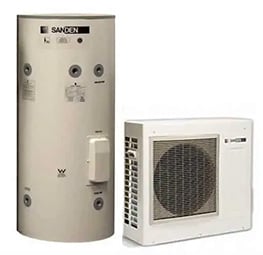
Benefits of PV System Integration with Heat Pumps
One of the major benefits of integrating a heat pump with a PV system is the ability to make full use of the energy generated by solar panels. Rather than exporting excess energy back to the grid, where compensation is often minimal, the heat pump can utilise this energy to heat water or provide space heating. This not only reduces energy consumption but also helps in lowering electricity bills.
Maximizing Renewable Energy Utilisation
The combination of a Sanden Heat Pump and a PV system exemplifies the symbiotic relationship between renewable energy technologies. While solar panels generate electricity from the sun, the heat pump maximizes the utilisation of this energy by converting it into heat energy. This integration allows homeowners to tap into clean, renewable energy and reduce their dependence on traditional fossil fuel-based systems.
Suitable for Harsh Climates
Additionally, the Sanden Heat Pump is designed to work efficiently even in colder climates, making it suitable for regions where winters can be harsh. With its advanced technology, the heat pump can extract heat from the surrounding air, even at temperatures as low as -15°C (-26°F). This versatility and reliability make it a great option for PV system integration, regardless of the weather conditions.
Energy Savings with PV System Integration
Integrating a Sanden Heat Pump with a PV system can deliver significant energy cost reductions. By utilising excess energy generated during peak sun hours to heat water or provide space heating, homeowners can reduce their reliance on electricity from the grid. This leads to substantial savings in energy bills, especially during colder months when heating demands are higher.
How Does it Work?
During peak sun hours, when the PV system is generating excess energy, this energy can be diverted and used to power the heat pump. The heat pump then uses this energy to heat water or provide space heating. By utilising renewable energy for these purposes, the homeowners can reduce their reliance on grid electricity.
Energy and Cost Efficiency
This integration not only reduces energy consumption but also helps in lowering electricity bills. By utilising excess PV energy that would otherwise be exported back to the grid, homeowners can maximize their cost savings. This is especially true for households that consume a significant amount of hot water or have high heating demands.
Additional Environmental Benefits
In addition to the energy and cost savings, integrating a heat pump with a PV system also brings environmental benefits. By reducing reliance on fossil fuel-based systems for heating water or space heating, homeowners can significantly reduce their carbon footprint. This contributes to the overall goal of transitioning to a sustainable and low-carbon future.
Conclusion
PV system integration with heat pumps, particularly for heating water, is a highly beneficial option for homeowners. By utilising excess PV energy to power the heat pump, homeowners can maximize their energy savings, reduce reliance on grid electricity, and lower their electricity bills. This integration also contributes to a more sustainable and low-carbon future by reducing dependence on fossil fuel-based systems. Overall, PV system integration with heat pumps is a win-win solution for both homeowners and the environment.
Booster elements on Heat Pumps
So, why would you want to buy a heat pump with a boost element? The truth is, you probably don’t. Boost element systems are less efficient and use more electricity than heat pumps without a boost element. They also take longer to heat up and can run out of hot water more quickly.
If you live in a warmer climate like Queensland, a boost element system might be suitable for you. However, for places like Adelaide, Melbourne, and Tasmania, where temperatures can drop below zero, booster element systems are not the best option.
One of the main drawbacks of booster element systems is that they only boost the top 100 litres of water in the tank. This means that if you have a larger tank or a higher demand for hot water, you may run out of hot water more quickly.
Heat pumps work by cycling heat from the outside air to heat the water more quickly. However, this process is more efficient when the outside air temperature is higher. In Adelaide, for example, outside air temperatures can drop below zero, which can make running costs for a booster element system much higher.
If you’re considering a heat pump, it’s important to take into account the conditions in which the heat pump will be operating. Sanden heat pumps, for example, can operate down to minus 10 degrees Celsius, making them a more suitable option for colder climates. Cheaper heat pumps, on the other hand, may only operate down to +5 degrees Celsius and rely on a booster element to heat the water in colder temperatures.
While a booster element may seem like a good backup option, it’s important to consider the additional costs that come with using it during winter. The booster element can significantly increase your water heating costs, making it less economical in the long run.
In conclusion, if you live in a colder climate like Adelaide, Melbourne, or Tasmania, it’s best to avoid heat pumps with booster elements. They are less efficient, use more electricity, and can run out of hot water more quickly. Instead, opt for a heat pump without a boost element that can still provide efficient heating even in colder temperatures. SA Hot Water in Adelaide offers a range of heat pumps without booster elements that are suitable for a variety of climates.
Solar Hot Water vs Heat Pump Hot Water Systems
When it comes to choosing a hot water system for your home, there are several options available. Two popular choices are solar hot water systems and heat pump hot water systems. In this article, we will compare these two types of systems to help you make an informed decision.
Solar Hot Water Systems
Solar hot water systems rely on the sun to heat the water. They consist of solar thermal panels that collect the sun’s energy and transfer it to a storage tank. Here are some key points about solar hot water systems:
- Solar hot water systems only work when the sun is out and can achieve optimal performance in areas with plenty of sunlight.
- In regions like Queensland and tropical climates, these systems work exceptionally well. However, they are not as efficient in southern Australia.
- Solar hot water systems have a backup element that heats the water when there is no solar gain. This backup element uses electricity, usually consuming around 3.6kw per hour, which can be costly to operate.
It is important to note that solar hot water systems require direct sunlight to function properly. They do not work on cloudy, rainy, or foggy days. Additionally, they can be quite heavy when installed on the roof, weighing as much as 400 Kg.
Another drawback of solar hot water systems is that they tend to vent excessively hot water on hot days, wasting water. Close coupled solar hot water systems, especially, are not suitable for extremely hot days as they may boil the water and dump it until the tank cools down. This not only wastes hundreds of litres of water but also reduces the lifespan of the solar system.
Heat Pump Hot Water Systems
Heat pump hot water systems, on the other hand, do not rely on the sun for energy. These systems use heat from the surrounding air to heat the water in a storage tank. Here are some key points about heat pump hot water systems:
- Unlike solar hot water systems, heat pump hot water systems can provide energy-efficient hot water all year round, without the need for sunlight.
- Heat pumps use significantly less electricity compared to conventional electric storage water heaters. In fact, a Sanden heat pump is 82% more efficient than a conventional electric hot water system.
- Heat pump hot water systems are especially suitable for regions with lower sun exposure, such as Melbourne, Hobart, and Adelaide.
Comparison and Recommendations
Both solar hot water systems and heat pump hot water systems have their pros and cons. Solar hot water systems are environmentally friendly, using the sun’s energy to heat water. However, they are dependent on sunlight and may not function optimally in areas with less sun exposure. Additionally, they can be heavy and may waste water on hot days.
On the other hand, heat pump hot water systems are highly energy efficient and can provide hot water throughout the year, regardless of sunlight. They are especially recommended for regions with lower sun exposure, such as Melbourne, Hobart, and Adelaide.
In conclusion, while solar hot water systems are suitable for certain climates and regions with abundant sunlight, heat pump hot water systems are a more reliable and efficient option for year-round hot water. If you are considering installing a hot water system, we recommend considering a heat pump, such as the Sanden heat pump, for energy-efficient hot water all year round.
SA Hot Water is a reputable supplier of both solar hot water systems and heat pump hot water systems in Adelaide.
Contact us today to learn more about your options and choose the best hot water system for your needs.
Heat Pump Noise
Heat pump noise is an important consideration when choosing a heat pump for your home or business. Noisy heat pumps can be disruptive to occupants and neighbors, causing annoyance and potential conflicts. In this article, we will discuss the noise levels of heat pumps and what is considered an acceptable noise level.
How Noisy Are Heat Pumps?
The noise level of heat pumps can vary depending on the type of system and its components. Generally, all-in-one heat pump systems are noisier than split systems. This is because in all-in-one systems, the compressor sits on top of the tank, causing the sound to vibrate the metal components and reverberate. In contrast, split systems have the compressor situated on the ground on rubber feet, resulting in reduced noise levels.
Acceptable Noise Levels
The acceptable noise level from a heat pump can vary depending on the location and surrounding environment. However, anything around 50 decibels (dB) can be considered annoying to both occupants and neighbors. To put this in perspective, a whisper is about 30 dB, normal conversation is about 60 dB, and a motorcycle engine running is about 95 dB.
Under the Noise Policy, domestic activities are deemed too noisy if the continuous source noise level exceeds the ambient noise level and is 45 dB(a), or if the maximum source noise level exceeds the ambient noise level and is 60 dB. This highlights the importance of keeping heat pump noise levels within acceptable limits.
Dealing with Heat Pump Noise Nuisance
Noise from neighbors, including heat pump noise, can be a common source of nuisance. If the noise falls within the definition of a local nuisance under the Local Nuisance and Litter Control Act 2016 (SA), complaints can be handled by the local council. The following noisy activities may fall within the definition of a local nuisance if the level, nature, and extent of the noise unreasonably interferes with the enjoyment of neighboring premises:
- Fixed machine noise (domestic)
- Noise from fixed machinery on domestic premises, such as air conditioners, that travels to neighboring premises
The Environment Protection (Noise) Policy 2007 provides guidance on the level of noise for machines deemed too noisy. For example, a machine is considered too noisy if measurements taken between 7 am and 10 pm on the same day show that the continuous source noise level exceeds 52 dB(A), or 45 dB(A) between 10 pm on one day and 7 am the following day.
Comparison of Heat Pump Noise Levels
When choosing a heat pump, it is essential to consider the noise level. Here are some examples of different heat pump models and their noise levels:
- Sanden: The Sanden heat pump is known for its quiet operation, with a noise level of 37 decibels.
- Quantum: The Quantum heat pump has a noise level of 48 decibels.
- Rheem: Rheem heat pumps operate at a noise level of 48 decibels.
- Steibel Eltron: Steibel Eltron heat pumps have a noise level of 48 decibels.
- Evo Heat: Evo Heat heat pumps produce a noise level of 48 decibels.
- Media: Media heat pumps have a noise level of 48 decibels.
- Rinnai: Rinnai heat pumps operate at a noise level of 48 decibels.
- Apricus: Apricus heat pumps generate a noise level of 48 decibels.
- I Store: I Store heat pumps have a noise level of 48 decibels.
Choosing a heat pump with a lower noise level can help minimize potential disturbances and ensure a quieter living or working environment.
Conclusion
When selecting a heat pump, it is crucial to consider the noise level to ensure it does not cause annoyance to occupants or neighbors. All-in-one heat pump systems tend to be noisier than split systems, and noise levels above 50 dB can be considered annoying. It is important to keep heat pump noise within acceptable limits to avoid potential conflicts and noise nuisance complaints.
In conclusion, while solar hot water systems are suitable for certain climates and regions with abundant sunlight, heat pump hot water systems are a more reliable and efficient option for year-round hot water. If you are considering installing a hot water system, we recommend considering a heat pump, such as the Sanden heat pump, for energy-efficient hot water all year round.
SA Hot Water is a reputable supplier of both solar hot water systems and heat pump hot water systems in Adelaide.
Contact us today to learn more about your options and choose the best hot water system for your needs.
Contact SA Hot Water Today!
If you are in need of hot water repairs or replacements in Adelaide, don’t hesitate to contact SA Hot Water. Our licensed plumbers and gas fitters are available to service all areas of the Adelaide metropolitan area, including all adjoining suburbs.
Get in touch today
Same Day Hot Water
Repairs & Replacement
Leave Your details now for Immediate call back
